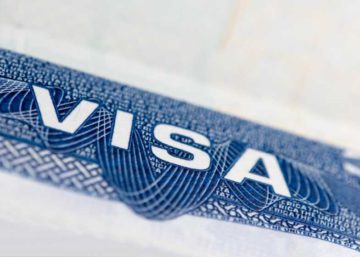With the overseas admission season around the corner, you must know the extremely crucial elements of the admission process, i.e. the early action and early decision deadlines. The early action deadline refers to a type of early admission process followed by US universities wherein students are required to submit their application by November 1 or November 15. Students who follow the early action deadline are notified their application outcome by mid-December instead of April 1.
Early decision, on the other hand, is a commitment for the student to enrol if their application is accepted under the early decision program run by many universities. Under this, the selected student has to withdraw their applications from all other institutes they may have applied to and enrol at this university. While early action allows the applicant to apply to more than one early action and decision institute, early decision program does not have any such provision.
Early action programs are categorized under two types – restrictive early action and non-restrictive early action. While restrictive EA gives applicants an option to apply to only one EA institutions and no early decision colleges, non-restrictive EA does not have any such conditions.
Who Should Go for Early Action?
You know that early action is a good option for you if you are thorough with your college research and have all the aspects of your application ready by October 1. According to data, students applying under EA have a greater chance of getting accepted than regular applications. Nevertheless, if you feel that you can come up with a stronger application by the regular decision, wait for it! A strong application is what matters the most.
Apart from being selected or denied admission, your application may go into a third state known as deferred, which means that your application may be placed under regular applicants to be reviewed again in February or March. If you remain interested in the said school during your deferred duration, you could send any data or scores you think will make your application stronger. Popular institutions with early action programs include MIT, UVA, Notre Dame, Caltech, Georgetown, the University of Chicago, UNC, the University of Michigan, and Villanova. If you are thinking to go for early action deadline, you have to start preparing for your application well in time. Here goes a few tips for you to prep yourself for an early application.
1. Start Working on Your SAT/ACT
It is true that your SAT/ACT scores improve if you retake them and go for focused preparations in between the preparation. If you are going for EA, your last chance to take the ACT is September and that for SAT is October, which means you would not be able to view your scores before submitting your application for EA. Thus you should aim at completing the SAT/ACT in the fall of your junior year, retake in the spring of your junior year, and again retake in the summer or fall after your junior year.
2. Getting Your Recommendation Letters Ready
Generally, you should keep a month for obtaining your recommendation letters from your teachers and counselors. It is a great idea to ask for your recommendation letters at the end of your junior year as then, your recommenders will remember your contributions and achievements very clearly.
3. Working on Your Essays
Your essays reflect who you are and your capabilities. They are an interface between you and the selection committee. Take time to prepare these. Start preparing them in summer so that you have ample time to brainstorm, write and rewrite and get feedback until you have come up with the perfect essays.
4. When to Finish Your Application
By September and October, you should be working on the rest of your application, checking and rechecking information included in your application and building your application adequately with the help of your extracurricular achievements. Starting to prepare your application (including the SAT/ACT) in the spring of your junior year, you can be absolutely ready to go by November!
All About Rounds 1, 2 and 3 of Application Process
The selection for MBA in many reputed universities entails three rounds. Now the question is whether you should apply in the first round or wait for the third round, here we go!
Round 1 (takes place early in the year for rolling admissions)
There are significant pros of applying in round 1. One, the selection panel feels that you are a well prepared and sincere candidate. Two, your chances of getting selected are higher as you are competing with only the applicants in the round 1. Applying in round 1 also gives you an option to apply for round 2 in other schools. While the pros of applying in round 1 remain many, there always are a few cons like being pushed into the waiting category in case the admission panel feels that your application is not the most suitable.
Round 2 (takes place mid-year for rolling admissions)
Talking about the pros of applying in round 2 of the admission process, it makes sense for students who need some extra time to improve their scores or overall application. It also gives you the time to attend fairs and information sessions and equip you application in the best way possible. The cons of applying in round 2 include you being part of a bigger crowd. This is the time when most applications are submitted and you end up completing with a larger number of applicants.
Round 3 (late in the year for rolling admissions)
The pros of going for the round 3 include your admission in the last few spots available for strongest applications. If you are a deserving candidate, business schools still may offer you a seat! Most business schools will still have a few spots available for outstanding candidates. Owing to your strong candidacy reflected through a well-researched application, skills and background, even top business schools might still offer you admission in Round 3, rather than losing out on an excellent candidate like yourself to any other school. The con of applying late is that most seats have been filled by this time. Most scholarships are gone.







